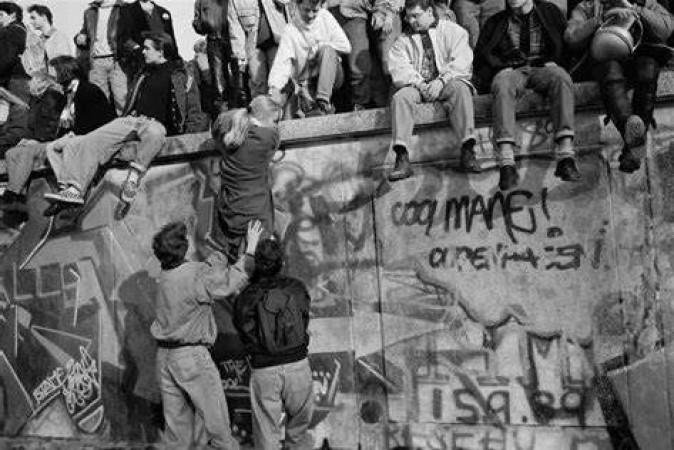
Introduction
The fall of the Iron Curtain in 1989 marked a significant turning point in history, symbolizing the end of communist regimes in Eastern Europe. This event had profound political, social, and economic implications, reshaping the geopolitical landscape of the world. In this article, we will delve into the circumstances that led to the fall of the Iron Curtain, explore the key events that unfolded during this period, and examine the lasting impact it had on Eastern Europe and the world at large.
1. The Origins of the Iron Curtain
The term "Iron Curtain" was coined by Winston Churchill in 1946 to describe the ideological and physical divide between Western Europe and the Eastern Bloc, which was under the influence of the Soviet Union. The Iron Curtain effectively isolated the countries of Eastern Europe from the democratic and capitalist nations of the West. The region became dominated by communist governments and Soviet control, leading to decades of repression and limited freedoms for its citizens.
2. Cold War Tensions: The Division of Europe
The aftermath of World War II intensified the already existing tensions between the Soviet Union and the Western powers. The division of Europe into two ideological blocs, NATO and the Warsaw Pact, solidified the separation between the East and the West. The Iron Curtain became a powerful symbol of this division, with a heavily fortified border separating the two worlds.
3. Winds of Change: Gorbachev and Perestroika
In the 1980s, a new leader emerged in the Soviet Union: Mikhail Gorbachev. Gorbachev introduced a series of political and economic reforms known as perestroika and glasnost, aimed at restructuring the Soviet Union and promoting openness and transparency. These reforms laid the groundwork for the eventual downfall of the Iron Curtain.
4. The Revolutions of 1989
The year 1989 witnessed a wave of revolutions throughout Eastern Europe, with several countries breaking free from communist rule. These revolutions were largely peaceful and marked a significant departure from the violent uprisings of the past.
4.1 Poland: The Birth of Solidarity
Poland's Solidarity movement, led by Lech Walesa, played a pivotal role in challenging the communist regime. Through strikes, protests, and negotiations, Solidarity managed to weaken the ruling government and pave the way for democratic reforms.
4.2 Hungary: Opening the Border
In a groundbreaking move, Hungary opened its border with Austria, allowing thousands of East Germans to escape to the West. This event served as a catalyst for change, inspiring other countries to follow suit.
4.3 East Germany: The Fall of the Berlin Wall
One of the most iconic moments of the fall of the Iron Curtain was the fall of the Berlin Wall on November 9, 1989. The reunification of East and West Germany became an enduring symbol of freedom and unity.
4.4 Czechoslovakia: The Velvet Revolution
Czechoslovakia experienced a peaceful revolution known as the Velvet Revolution, led by Vaclav Havel. The movement advocated for democracy and human rights, ultimately leading to the ousting of the communist government.
4.5 Romania: Overthrowing Ceausescu
Romania's revolution was the bloodiest of all the uprisings in 1989. The Romanian people rose up against the oppressive regime of Nicolae Ceausescu, resulting in his execution and the end of communist rule.
5. The Reunification of Germany
The fall of the Berlin Wall not only symbolized the reunification of Germany but also served as a powerful representation of the broader reunification of Europe. The East and West were brought together, and Germany emerged as a unified nation, signaling a new era of peace and cooperation.
6. The Aftermath: Democratization and Transformation
The fall of the Iron Curtain led to significant political, social, and economic changes in Eastern Europe. Countries that were once under Soviet influence embarked on a path of democratization, embracing free-market economies and individual freedoms. The transition was not without its challenges, but Eastern European nations persevered and transformed themselves.
7. The Legacy of the Iron Curtain
The legacy of the Iron Curtain continues to shape the world today. It serves as a reminder of the dangers of division and the importance of maintaining open and free societies. The fall of the Iron Curtain also paved the way for the expansion of the European Union and NATO, further integrating Eastern European countries into the global community.
Conclusion
The fall of the Iron Curtain in 1989 was a monumental event that marked the end of communist regimes in Eastern Europe. It was a triumph of freedom, democracy, and the human spirit. The revolutions of 1989 brought down the Iron Curtain, reuniting nations and opening the door to a new era of cooperation and progress.
ISRO to launch Chandrayaan-3 on Friday, Know All about the mission
Manipur Violence: Tribal Leader Forum Regrets Kuki Zo Conflict